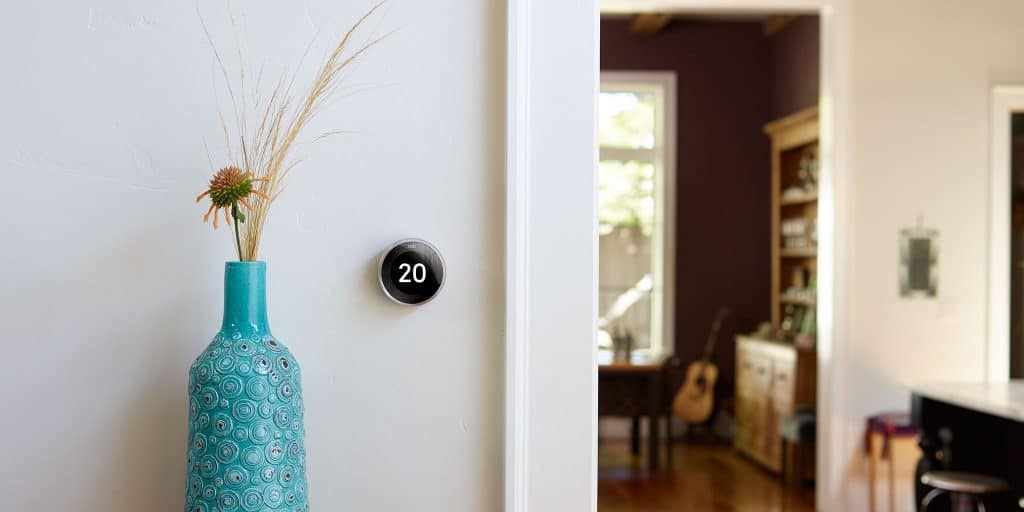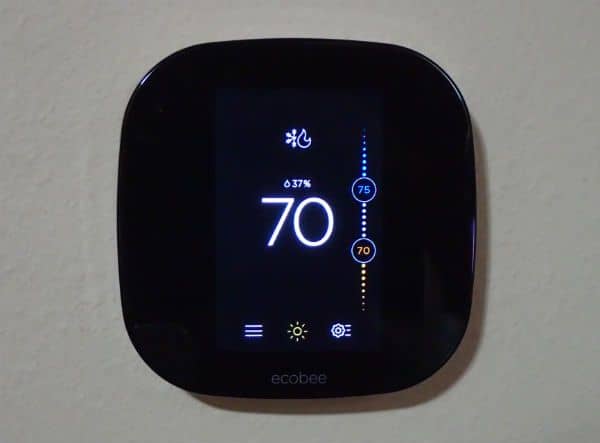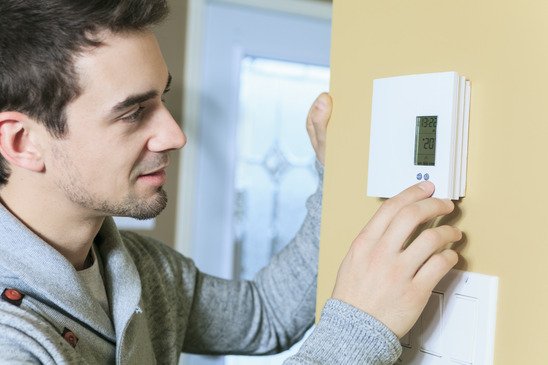If you plan on getting a smart thermostat and don’t have a c wire, please save yourself some headaches and get one. I promise it’s not expensive and just about anyone can do it.
So, how do you do it?
What is the C Wire on a Thermostat?
The c wire is an extra wire that can be used to provide a return path for continuous 24V power for any application. It’s normally used to provide a return path to power the thermostat.
The “c” stands for common. It is often labeled as “c” on thermostat backplates. Keep in mind that it is not necessarily labeled as c and the wire is not necessarily any particular color. Although there are some best practices, there are no strict standards that wire name and color adhere to.
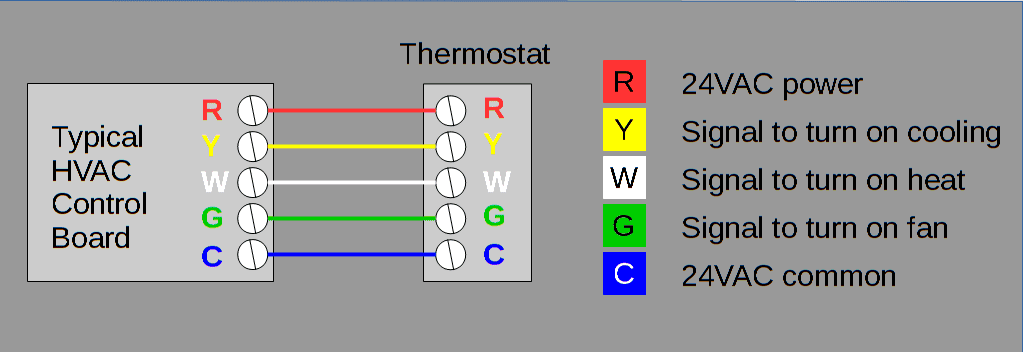
Although I’ve seen it stated in several places, it’s not entirely correct to say that the c-wire is what powers the thermostat.
Typically, the wires that provide the power (often called the “hot” wires) are labeled Rc (cooling) and Rh (heating). They provide a source of 24V power coming from the HVAC control board. Sometimes they are separate wires and require separate connections. Other times they are the same wire. In that case it will typically be labeled Rh/c.
In order to have a circuit that power can flow through, wires need to connect back to the HVAC control board to complete the loop. That’s what the other wires do.
So, the c wire doesn’t actually provide the power. It provides a return path so that the thermostat can be powered without disrupting the other wires which are used as electrical on/off switches for your equipment.
Why Do I Want a C Wire?
Now that you know what the c wire is, you may be asking yourself, why do I want it?
Today’s wireless thermostats require more power than the simple calculator-screen programmable thermostats of the recent past.
Keeping a connection to a WiFi router or an automation hub is one power requirement that never existed. Trying to maintain a WiFi connection will drain a couple AA batteries within days.
Many smart thermostats come equipped with a large, full-color touch-screen. This is another feature that contributes to the need for a constant power source.
Using a c wire is the best way to provide the constant power that is required.
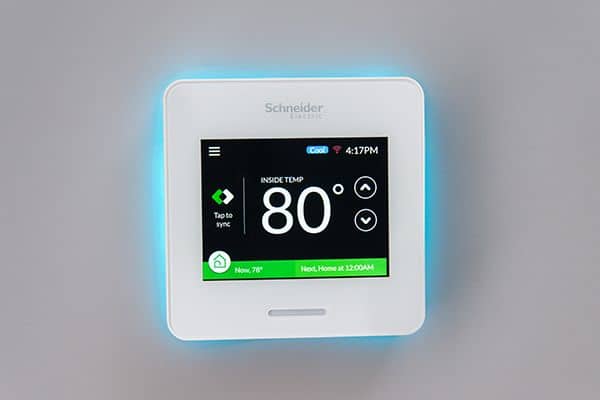
Some smart thermostats claim to not need a c wire. One example is the Emerson Sensi WiFi thermostat. This quote from their website makes me think otherwise:
“If you already have a c-wire connection, even though it is not required, we recommend connecting it to Sensi to help improve Wi-Fi connectivity and battery life.”
If connecting a c wire improves WiFi connectivity and battery life, that means it’s less than optimal without it. I don’t know about you, but those are two things that I very much prefer to have at their optimal levels.
If your thermostat loses power completely, your equipment can’t turn on. Do you really want to risk that happening?
Smart thermostats are supposed to make our lives easier. Nobody wants to be replacing batteries once per week or even once every couple months. I want to be able to hook one of these things up to the wall and hardly even think about it for the next five years.
I don’t want to be on vacation worrying about my thermostat batteries or WiFi connection. In fact, I don’t want to be anywhere and have to worry about anything related to my thermostat.
How Do I Know If I Have A C Wire?
*Before messing with any sort of wiring, it’s always a good idea to shut the power off...
To check if you already have a c wire hooked up, start by taking your current thermostat off the wall to expose the wiring.
Check the labels
You will probably see a few wires connected to some labeled terminals. If you happen to see one connected to the terminal labeled “c”, then you are in luck. You have a c wire!
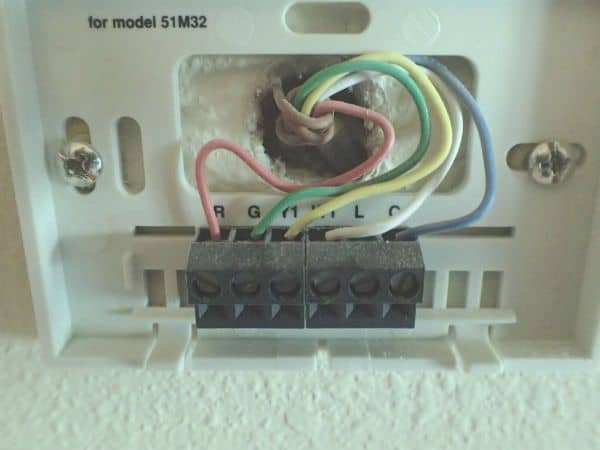
If there is a terminal labeled “c” and it’s empty, you probably don’t have a c wire. Hang on, though! It might still be there…
Are there any extra loose wires?
Sometimes installers run the c wire from the control board to the thermostat location but don’t hook it up. You may want to take off the thermostat backplate and pull out the wires to see if the extra wire is there.
Check The Control Board
If you still aren’t sure if you have a c wire, go to your HVAC control board. Check to see if there is a wire attached to the “c” terminal.
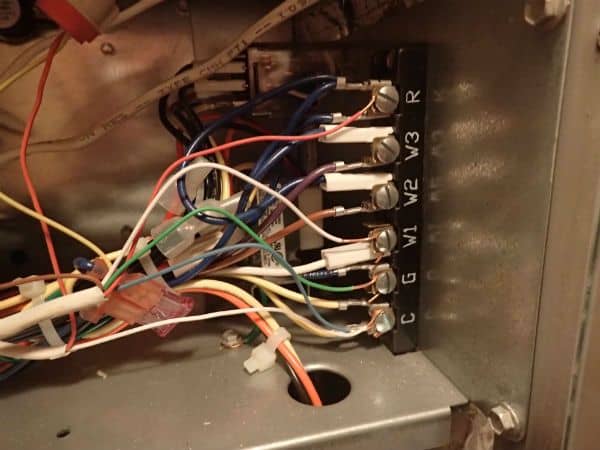
If there is no wire, you don’t have a c wire and will probably want to get one. If there is a wire connected, note its color and go back to your thermostat. Whichever wire matches the color, should be your c wire.
Four Ways To Fix the C Wire Problem
Don’t get stuck pulling your hair out trying to run a smart thermostat without a c wire. If you’re anything like me, you need to keep all the hair you have!
Don’t worry, it’s not that big of a deal to add a c wire. If you can handle programming a smart thermostat, you can figure out how to add a c wire.
Here’s four ways to fix the problem:
1. Purchase An “Add-A-Wire” Kit
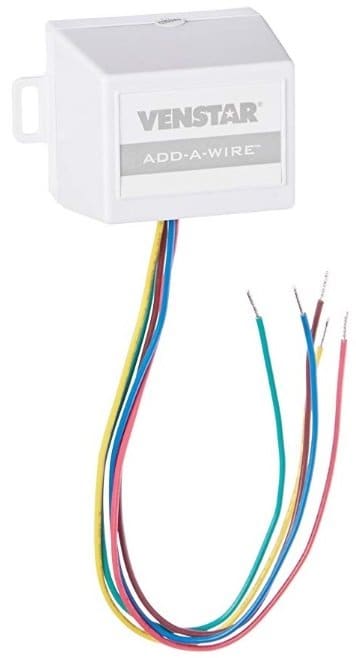
In most cases, this solution is the best solution to the problem.
An “add-a-wire” kit allows your thermostat to use your existing wires and still get constant power without using power stealing.
The kits are installed at the HVAC control board. Installation requires a screwdriver and the ability to read a wiring diagram.
You’ll have to remove the access panel to your furnace to locate the panel. Then, shut off the power before doing any work. Although the 24V power doesn’t pose much of a safety risk to you, shutting off the power reduces the risk of damaging the board.
Keep in mind that your control board is probably a fairly expensive piece of equipment. So, if you have any doubt about what you may be doing, it’s probably best to contact a professional.
There’s a few different manufacturers that make the add-a-wire kits. The Venstar kit has a proven track record and is the lowest cost kit I have found. The technology behind these kits is pretty simple, so there’s no reason to spend more if you don’t have to.
Also, if you purchase an ecobee or Nest thermostat (Compare ecobee vs Nest: Which is better?), they have ready made add-a-wire kits available. The ecobee comes with the part (they call it a PEK – power extender kit) and Nest has their Google Nest Power Connector available for purchase separately (see here).
Here’s a link to the Venstar kit:
Venstar ACC0410 Add-A-Wire Accessory | Check Price
2. Purchase A 24V C Wire Adapter
The 24V adapter (transformer) has two wires that plug into the thermostat to power it. The other end just plugs into a regular outlet.
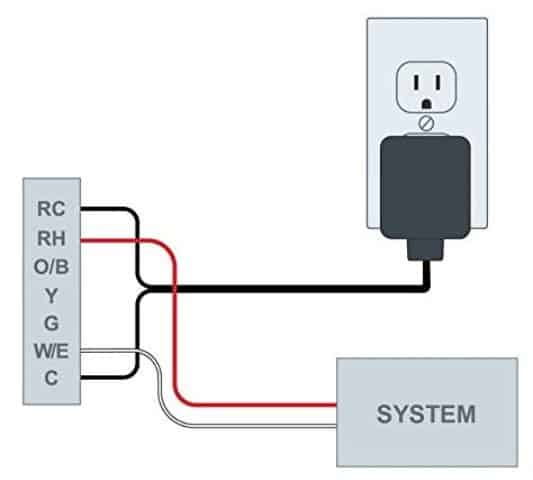
This is the easiest solution, but probably my least desirable. It’ll work just fine, but you’ll have an unsightly wire running from the thermostat to the outlet.
You could buy any 24V transformer to do the job, but this adapter is specifically made for smart thermostats. It has the two wire ends already stripped and ready to install in the thermostat. It also has extra long wires in case you don’t have an outlet near your thermostat.
3. Install Another Wire
This is the best solution in my opinion. However, it’s not the simplest solution. It requires running a wire from the HVAC control board to your thermostat.
If your home is already finished, this means trying to fish the new wire through the walls without destroying them. Depending on how far from the control board and how finished your walls are, this can range in difficulty from easy to hard.
4. Use A Power Stealing thermostat
What is a Power Stealing Thermostat?
Some thermostats, such as the popular Nest thermostat, have tried to get around the no c wire problem by using a technique commonly referred to as power stealing.
Power stealing uses the existing circuits to “steal” a small amount of power. The “stolen” power charges a battery, and the battery powers the thermostat.
The existing circuits are designed to act as on/off switches. Their function is not to actually power anything.
There is a certain “threshold” current running through the wire that represents the switch point. Any current above the threshold is “on” and any current below the threshold is “off”.
So, there can be a small amount of current running through the circuit without triggering the “on” condition. That is the current which can be used to power the thermostat via power “stealing”.
How Can Power Stealing Cause Problems?
The problem with power stealing is that the HVAC circuits were not designed for this. It provides a very small amount of power so doing it well is difficult. If you steal too much, you turn your equipment on when you don’t want to. If you steal too little, your battery gets drained and eventually the thermostat will go dead.
More power can be stolen when the HVAC system is on than when it is off. The thermostat can charge its backup battery when the equipment is running but tends to slowly discharge when the equipment is not running. This means that during times of minimal usage, the chance of running your backup batteries really low or even completely dead is a possibility.
To make matters worse, some thermostats like the Nest have a permanent battery. Rechargeable batteries like this will tend to lose their charge capacity over time (as anyone with a smartphone has ever found out). The power stealing with the Nest may work fine at first, but as the battery gets older, you may end up with problems.
Final Thoughts
Smart thermostats use too much power to be run by batteries. Power stealing can work, but it can be unreliable and is using your wiring in a way it wasn’t designed for. A c-wire is the best option and makes sure that your smart thermostat will have power as long as your house does.
My recommendations for adding a c-wire:
Best option: Add-a-wire kit
Easiest option: 24V transformer
Any comments or questions? Please leave a comment below and I’ll be happy to start a conversation!


